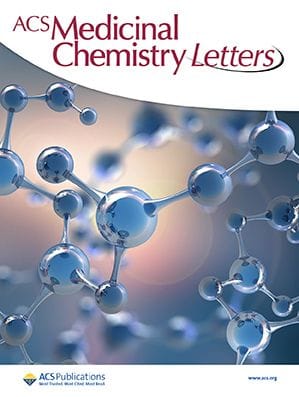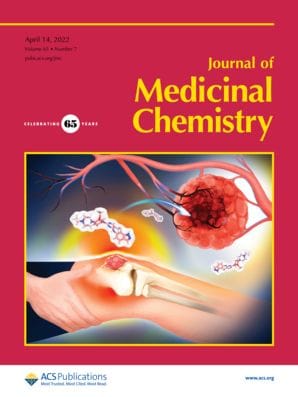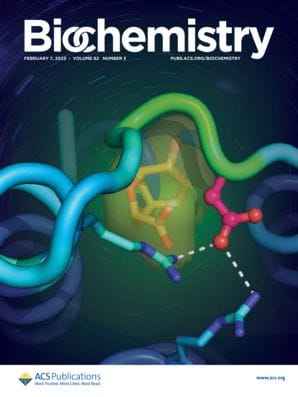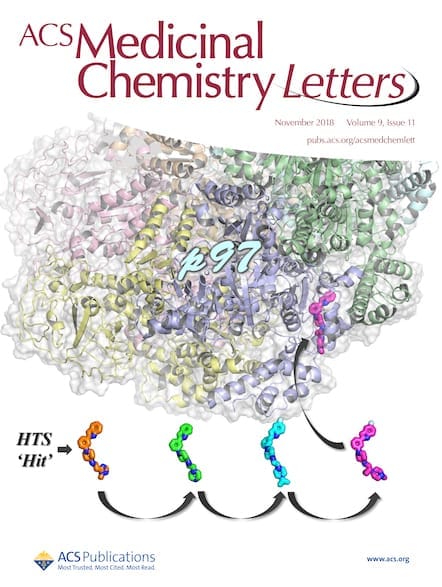'Bake Off' finalist Joshua P. Smalley has been just as busy in the lab as he has in the iconic white tent. We invite you to learn more about his latest published work, which explores molecules that could one day revolutionize how we treat debilitating diseases.

The Great British Bake Off (shortened to Bake Off by many) is a television show that features a group of amateur bakers competing in a series of challenges to make cakes, breads, pastries, and more—until after several weeks, just three are left to go head-to-head for the title of "UK's Best Amateur Baker." Earlier this year, Bake Off's latest season featured Dr. Joshua P. Smalley, a researcher in chemical biology from the University of Leicester and beloved finalist in the show. Throughout each episode, Dr. Smalley endeared himself to fans with his good humor and creative bakes.
But what viewers may not know is that while simultaneously honoring his much-loved Nan on national television, Dr. Smalley was also putting together a paper for ACS Publications. He recently revealed on X that he had been completing the final steps of the publication process while also preparing for Bake Off's final episodes—and he found it "rewarding in a very different way," describing himself as "delighted" to have his manuscript published in ACS Medicinal Chemistry Letters.
A New Recipe for Disease Regulation
Dr. Smalley's most recent study focuses on histone deacetylases (HDACs), which are crucial in regulating chromatin structure and gene transcription. Think of HDACs as our own little genetic librarians, controlling which genes are active vs. silent and ensuring that only the necessary genetic information is available at a particular time. But if HDACs become abnormally active or not properly regulated, harmful effects such as cancer, neurodegenerative diseases, and other bodily issues may arise. HDAC enzymes are therefore critical drug targets for oncology, offering exciting avenues for fighting inflammation and disease.1
To investigate this potential, Dr. Smalley and his colleagues synthesized four novel PROTACs (proteolysis-targeting chimera), which are specially designed molecules that can tag certain proteins in our cells for disposal—essentially tiny search-and-destroy agents. They consist of two components: a ligand for the protein of interest and an E3 ligase ligand, covalently bonded with a linker. The team designed unique molecules to degrade specific HDACs (1-3) using idasanutlin, a key inhibitor of the MDM2 protein. While idasanutlin is currently being tested in clinical trials for its cancer-fighting abilities, the researchers integrated it into the four PROTACs to explore new therapeutic avenues.1

Their study revealed a few promising findings:
- Two of the molecules reduced HDAC1 and HDAC2 abundance and HDAC1/2 corepressor components without affecting HDAC3.
- Surprisingly, idasanutlin alone was also capable of this effect, suggesting an association between the ligase and HDAC1/2 corepressor complexes—which could open new doors for designing future therapeutics.
This is not Dr. Smalley's first foray into the world of PROTACs and HDACs. An earlier study of his, published in the Journal of Medicinal Chemistry, revealed that HDAC1 and 2 degradation and regulation is critical for killing off harmful cancer cells.2 The team looked at two novel PROTACs, examining the potential of each to induce cell death. They also used RNA sequencing to analyze gene expression signatures in which cell cycle and DNA replication machinery are repressed. The more effective these PROTACs were at degrading HDAC 1 and 2, the more they noticed a boost in global gene activity—like removing a suppressor that was keeping things quiet, leading to a more active environment at the genetic level. The degradation of HDAC 1 and 2 led to an increase in enhanced apoptosis (another term for programmed cell death), which is particularly important in cancer therapy.3
Baking: Both Art and Science
It isn’t the first time a Bake Off contestant has published in an ACS journal. Sally Newton, an antibiotic researcher and biochemistry Professor at Kansas State University, has been on the U.S. version of the show. Prof. Newton's most recent paper, published in Chemical Reviews, looks at the critical role of iron in the ongoing battle between bacterial pathogens and their human or animal hosts.4 And earlier in her career, she published in Langmuir on peptide-mediated biomineralization.5
But perhaps the link isn’t so surprising. It is often said that baking, after all, is just chemistry. Other forms of cooking may be more forgiving in terms of how ingredients react, allowing even fairly inexperienced would-be chefs to make substitutions or tweaks to texture and flavor. But there is a level of precision involved in the art of baking, where the application of heat delivers dramatic structural changes, and where even how the batter is mixed—folded, whisked, and with what kind of implement—can affect density in the final product.
In baking, even small variations in the protein, liquid, and lipid composition can have unexpected consequences, and it is not so easy to predict how replacing one store cupboard essential with another will work out. That detail-oriented process perhaps lends itself to those with the precise mind of a research chemist. But after his time in the Bake Off tent, we are pleased to see that Dr. Smalley is now back in the lab. While we are sure he will continue making showstopper bakes for his friends and family, we are also excited to see what he cooks up next in the world of medicinal chemistry and chemical biology!

MDM2 Antagonist Idasanutlin Reduces HDAC1/2 Abundance and Corepressor Partners but Not HDAC3
DOI: 10.1021/acsmedchemlett.3c00449

Optimization of Class I Histone Deacetylase PROTACs Reveals that HDAC1/2 Degradation is Critical to Induce Apoptosis and Cell Arrest in Cancer Cells
DOI: 10.1021/acs.jmedchem.1c02179

Comprehensive Transcriptomic Analysis of Novel Class I HDAC Proteolysis Targeting Chimeras (PROTACs)
DOI: 10.1021/acs.biochem.2c00288
